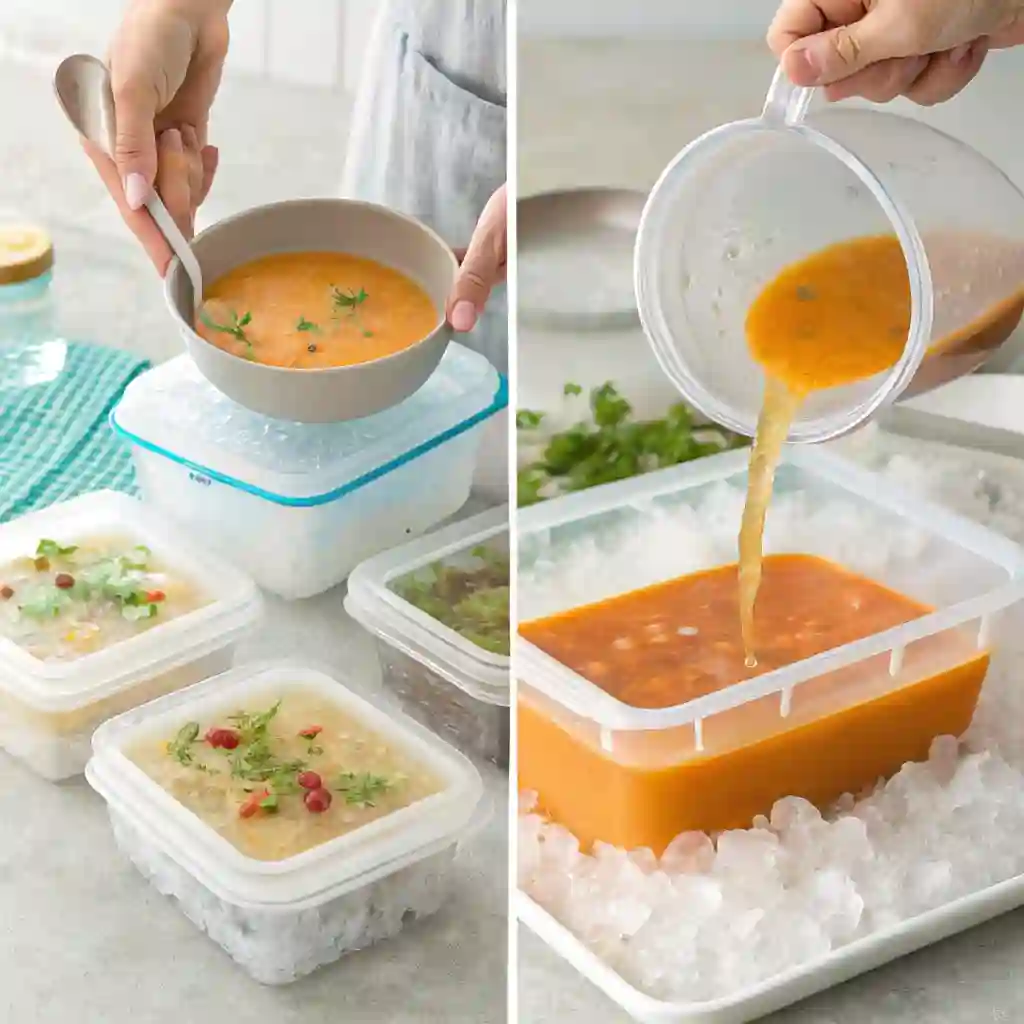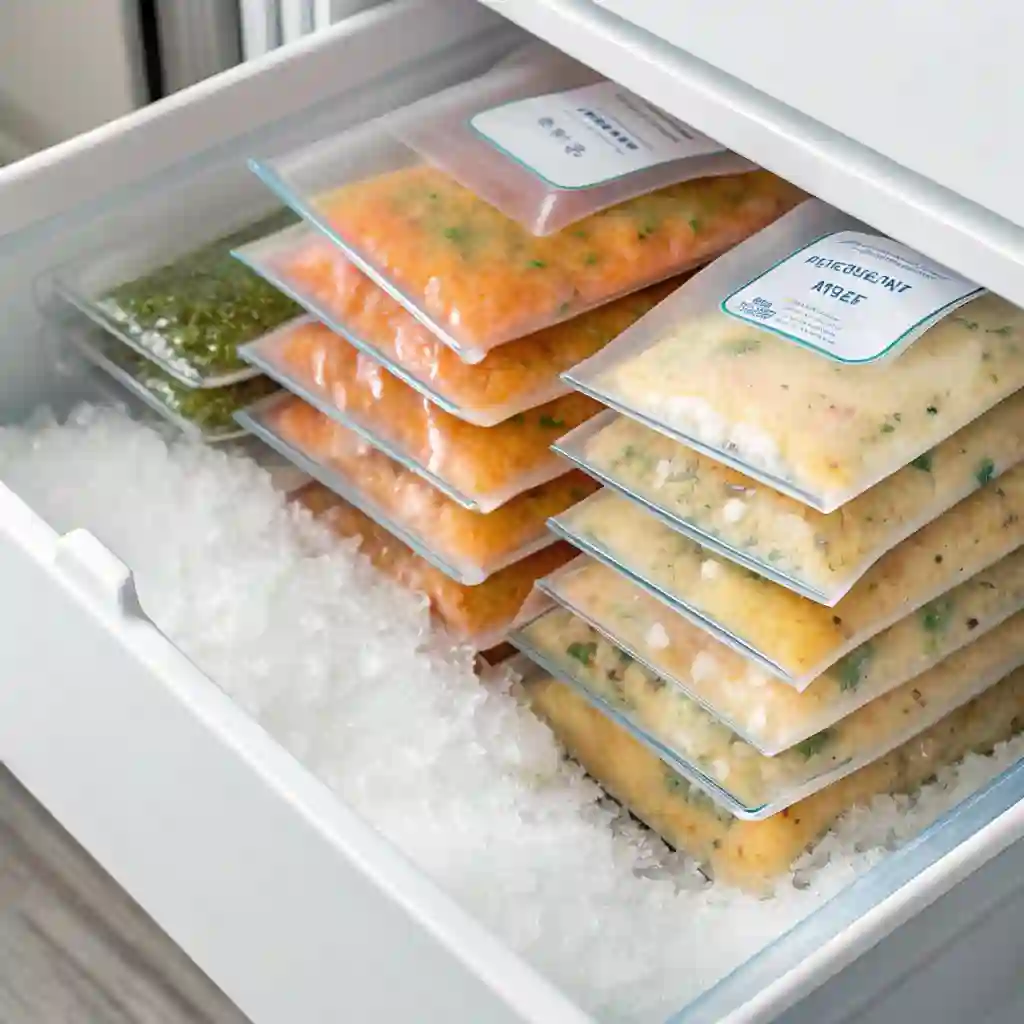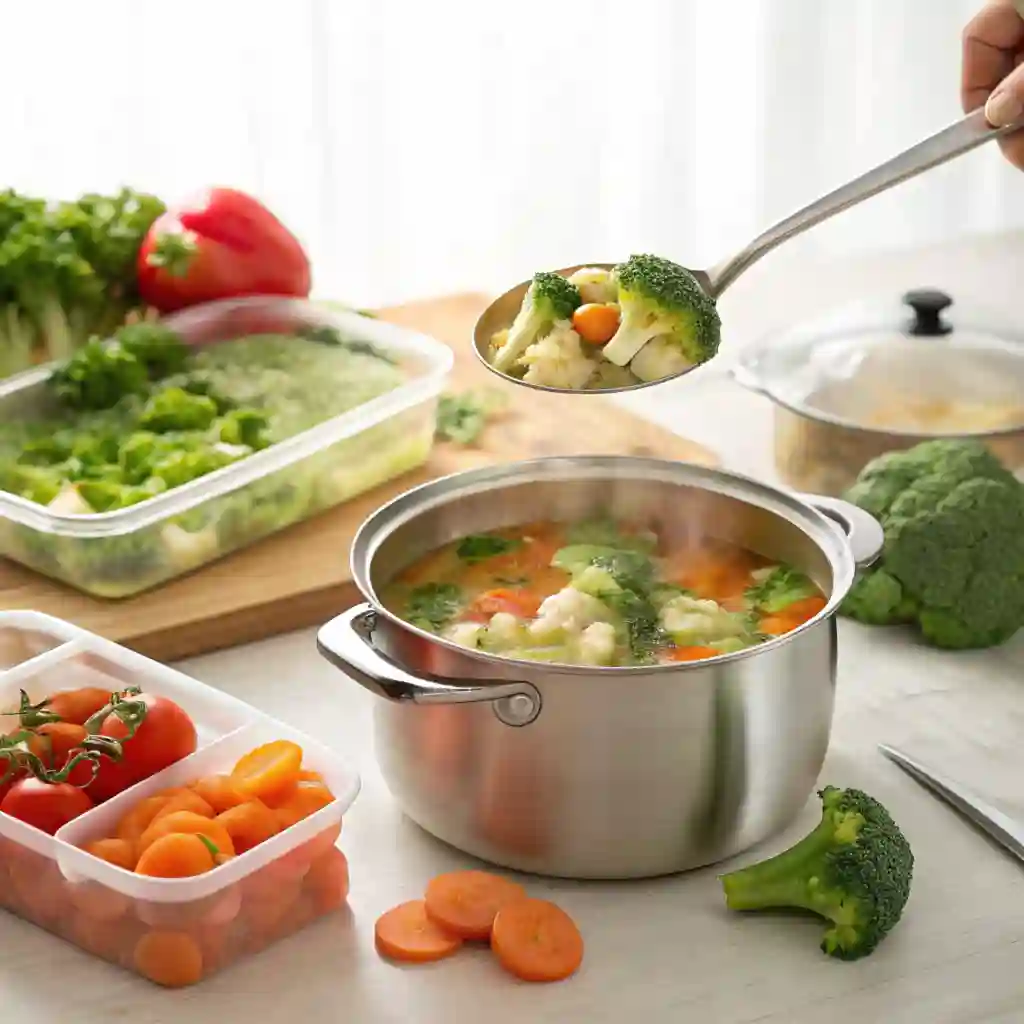Soup is one of the most versatile and comforting dishes, but knowing how to properly store soup is essential to keep it fresh, safe, and delicious. Whether you’ve made a big batch for meal prep or want to save leftovers, proper storage methods can prevent spoilage and ensure the flavors stay intact. This guide covers everything you need to know about storing soup—cooling it down quickly, refrigerating or freezing it, reheating it safely, and even using eco-friendly storage options. Let’s dive in to master the art of soup storage!
Table of Contents
Why Proper Soup Storage Matters
Maintaining Soup Quality and Freshness
When it comes to soups, freshness is key. Proper storage methods help maintain the soup’s taste, texture, and nutritional value. Soups can lose their vibrant flavors if exposed to air or improper temperatures. By storing soup the right way, you’ll ensure that every reheated bowl tastes as good as the first.
Preventing Foodborne Illnesses
Understanding how to properly store soup isn’t just about flavor; it’s also about safety. Incorrect storage can allow harmful bacteria to grow, putting your health at risk. Cooling soup quickly, refrigerating it within the recommended time, and using clean containers can prevent contamination and keep your soup safe to eat.
Extending Shelf Life Safely
Sometimes, life gets in the way, and you can’t finish that delicious pot of soup in one sitting. Proper storage methods allow you to extend its shelf life without sacrificing quality. Whether you refrigerate it for short-term use or freeze it for later, knowing the best practices will save you time and reduce waste.
Cooling Soup Before Storing

The Importance of Rapid Cooling
Knowing how to properly store soup begins with cooling it down correctly. Rapid cooling is crucial to prevent harmful bacteria from growing. When soup stays at a warm temperature for too long, it enters the “danger zone” (40°F to 140°F), where bacteria can multiply quickly. Cooling your soup within two hours of cooking ensures it’s safe to store and enjoy later.
Best Practices for Cooling Soup
There are a few tricks to speed up the cooling process. Start by transferring your soup to shallow containers, which allow heat to dissipate more quickly. Another effective method is to place the pot of soup in an ice bath—simply fill your sink with cold water and ice cubes, then submerge the pot halfway while stirring occasionally. For soups with chunky ingredients, stirring them frequently helps distribute the heat more evenly and cools it faster.
Mistakes to Avoid When Cooling Soup
One common mistake is placing hot soup directly in the fridge. This can raise the refrigerator’s temperature and put other food at risk. Also, avoid covering the soup with a tight lid while it’s still warm; condensation can form, affecting the soup’s texture and flavor. Always allow your soup to cool to room temperature before sealing and storing it.
Storing Soup in the Refrigerator
How Long Can You Refrigerate Soup?
Understanding the shelf life of refrigerated soup is key when learning how to properly store soup. Most soups can be safely stored in the fridge for three to four days. However, cream-based soups or those with seafood may have a shorter shelf life, so it’s best to consume them within two days. Always check for signs of spoilage, such as an off smell, slimy texture, or discoloration, before reheating.
The Best Containers for Storing Soup in the Fridge
The type of container you use makes a big difference in maintaining freshness. Airtight glass containers are ideal for preserving flavors and preventing leaks. Plastic containers are another option, but choose BPA-free versions to avoid potential health risks. For a space-saving solution, reusable silicone bags work well and can easily be laid flat to maximize fridge space.
Organizing Soup in the Fridge
Placement matters when storing soup in the fridge. Keep it on the top shelf, where the temperature is most consistent. Label your containers with the date to ensure you use them before they go bad. For larger batches, divide the soup into smaller portions to make reheating quicker and reduce the risk of spoilage when opening the container repeatedly.
Freezing Soup for Long-Term Storage

Preparing Soup for Freezing
Freezing is an excellent way to extend the shelf life of your soup while maintaining its flavor and quality. The first step in how to properly store soup for freezing is to cool it completely. Freezing warm soup can create ice crystals that affect texture and taste. Divide the soup into smaller portions to make thawing and reheating more manageable. Be sure to leave some space at the top of each container to allow for expansion as the soup freezes.
Choosing the Right Freezer Containers
The type of container you use can make or break your frozen soup’s quality. Airtight plastic or glass containers with secure lids are ideal for preventing freezer burn. Silicone freezer bags are another space-saving option that can be laid flat for efficient storage. Always label your containers with the soup type and the date it was frozen to keep track of freshness.
Tips for Freezing Specific Types of Soup
Not all soups freeze equally. Broth-based soups freeze beautifully, while cream-based soups or those with dairy can separate upon thawing. For soups with pasta, consider freezing the pasta separately to avoid it becoming mushy. Chunky soups with vegetables or proteins should be stirred well before freezing to distribute ingredients evenly.
Reheating and Using Stored Soup
Safe Reheating Practices
When reheating frozen or refrigerated soup, safety is key. Always heat soup to a minimum internal temperature of 165°F to kill any potential bacteria. Use a thermometer if you’re unsure. Avoid reheating soup multiple times, as this can compromise both its flavor and safety.
Best Tools for Reheating Soup
There are several effective methods for reheating soup. The stovetop is great for even heating, allowing you to stir frequently to avoid scorching. A microwave is convenient for single servings, but be sure to cover the bowl to prevent splatters and stir halfway through for even heating. For larger batches, a slow cooker is a hands-free option that warms soup gradually.
Revitalizing Soup After Storage
Soup that’s been stored for a while may benefit from a little extra care during reheating. Fresh herbs, a splash of cream, or a squeeze of lemon can revive flavors and make the soup taste freshly made. For thicker soups, add a small amount of broth or water while reheating to adjust the consistency.
For more delicious soup recipes, check out our Split Pea Soup Recipe and add another comforting dish to your meal rotation!
Common Soup Storage Questions (FAQ)
Can You Store Soup with Cream or Dairy?
When learning how to properly store soup, cream or dairy-based soups require extra care. These types of soups tend to separate when frozen, resulting in an unappealing texture after reheating. To avoid this, consider adding the cream or dairy after thawing, during the reheating process. If the soup is already prepared, stir it thoroughly while reheating to help bring the ingredients back together.
How to Handle Soups with Meat or Seafood?
Soups with meat or seafood need special attention to ensure safety and freshness. Refrigerate these soups within two hours of cooking and consume them within three days. If freezing, use airtight containers to prevent freezer burn. When reheating, make sure the soup reaches an internal temperature of 165°F to kill any bacteria and ensure safety.
What Happens If Soup Is Left Out Too Long?
Leaving soup at room temperature for more than two hours is risky. Bacteria thrive in warm environments, especially between 40°F and 140°F. If soup has been left out too long, it’s best to discard it to avoid foodborne illnesses. Proper cooling and timely refrigeration are critical steps in learning how to properly store soup.
Sustainable Soup Storage Tips
Eco-Friendly Storage Solutions
Proper storage doesn’t have to harm the environment. To reduce waste, consider using reusable glass or silicone containers instead of single-use plastics. Silicone freezer bags are durable, easy to clean, and excellent for long-term storage. Investing in high-quality, reusable storage options can also save money over time.
Reducing Food Waste Through Proper Storage
One of the best ways to minimize food waste is by following guidelines for how to properly store soup. Labeling containers with dates helps you track their freshness, ensuring they’re used before spoiling. Freezing soup in individual portions makes it easy to thaw only what you need, reducing leftovers that often go uneaten.
Creative Ideas for Leftover Soup
Leftover soup doesn’t have to be boring. Use it as a base for new dishes, like casseroles, stews, or pasta sauces. For example, a creamy soup can transform into a flavorful sauce for baked chicken, while a vegetable-based broth makes an excellent risotto starter. These creative approaches maximize every drop of soup you’ve stored.
Creative Serving Ideas for Stored Soup
Transforming Stored Soup into New Dishes
Once you’ve mastered how to properly store soup, you can get creative with how you serve it. Stored soup isn’t just for reheating; it can be transformed into entirely new meals. For example, turn a chunky vegetable soup into a filling casserole by adding cooked rice or pasta and baking it with a cheese topping. A pureed soup can double as a rich sauce for proteins like chicken or fish. Even a simple broth can be used to enhance grains or as a base for a hearty stew.
Serving Soup with Delicious Pairings
Elevate your stored soup by pairing it with complementary sides. Crusty bread, herbed croutons, or soft dinner rolls add a satisfying texture to every spoonful. For a healthier option, pair your soup with a fresh salad or roasted vegetables. If you’re serving a cream-based soup, consider balancing it with a zesty vinaigrette salad. Broth-based soups, on the other hand, pair wonderfully with grilled sandwiches or light wraps.
Garnishes That Make It Special
Adding garnishes is a simple way to make stored soup feel freshly made. Top your reheated soup with fresh herbs, a dollop of sour cream, or a sprinkle of grated cheese for a burst of flavor. For added crunch, try roasted nuts, crispy bacon bits, or tortilla strips. These small touches can transform even a reheated soup into a gourmet experience.
Why Proper Soup Storage Matters for Every Home Cook
Preserving Flavor and Reducing Waste
Mastering how to properly store soup is essential for any home cook who loves making soups, stews, and broths. Proper storage preserves the soup’s original flavor and texture, allowing you to enjoy your hard work even days or weeks later. Additionally, storing soup correctly helps reduce food waste—a win for your wallet and the environment.
By portioning and labeling leftovers, you can easily track what’s in your fridge or freezer and avoid throwing out forgotten meals. Reheating just the amount you need minimizes unnecessary waste and ensures you always have something delicious on hand.
Adding Convenience to Your Busy Life
Soup storage is also a major time-saver. Whether you’re preparing meals in advance for a busy week or storing leftovers for quick dinners, knowing how to store soup properly means you’ll always have a wholesome meal ready to go. Frozen soup can be a lifesaver on hectic nights when cooking from scratch isn’t an option.
Whether you’re freezing a large batch for future use or saving a few servings for the next day, proper storage keeps your soup as satisfying as the day you made it. With these tips, you’ll always have fresh, flavorful soup at your fingertips.








